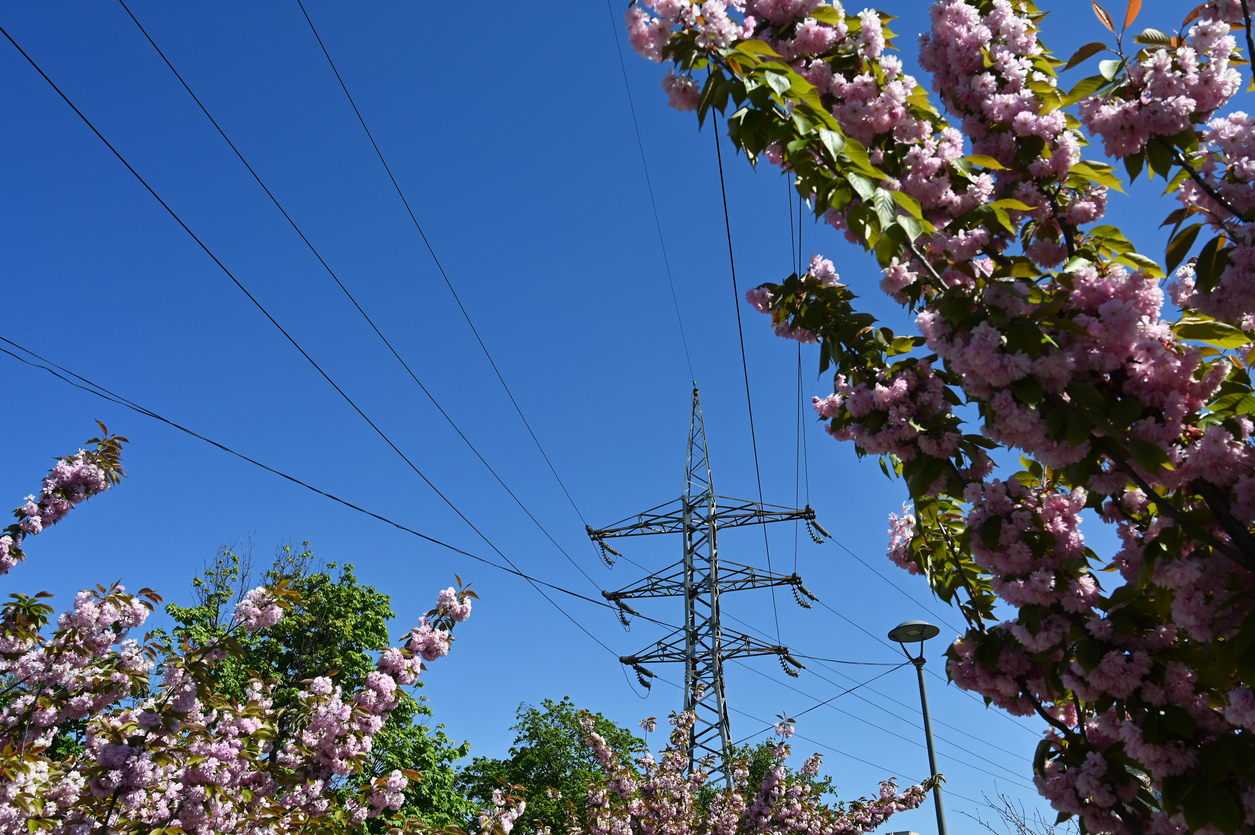Preparing for an early spring: Common reliability challenges surrounding vegetation management
 By Beth Rettig, Senior Technical Auditor, Operations & Planning Compliance Monitoring
By Beth Rettig, Senior Technical Auditor, Operations & Planning Compliance Monitoring
Are your vegetation management programs ready with the necessary controls in place as spring foliage begins to bloom? Here are some strategies registered entities should consider to make sure they’re prepared.
The birds are chirping loudly, and unseasonably warm temperatures have dominated Northeast Ohio for the majority of the year. Punxsutawney Phil did not see his shadow in February and predicted an early spring. This means the potential for a longer, larger spring growth flush could be right around the corner for all of the vegetation on and alongside the transmission rights-of-way. Are your programs ready with the necessary controls in place? Let’s dive into some of the more common challenges surrounding vegetation management and portions of the FAC-003 NERC Reliability Standard, which regulates these programs.
R5 Restrictions:
FAC-003, Requirement 5, is a risk-based requirement. The intended purpose is to proactively deal with situations that prevent a Transmission Owner or Generator Owner from completing planned vegetation management work. Specifically, for areas where a Transmission Owner or Generator Owner is constrained from performing vegetation work, they need to take corrective actions to ensure continued vegetation management work and prevent encroachments. What preventative actions can be assigned, taken, and tracked to avoid these constraints and to minimize sustained outage risk?
The intent of FAC-003, R5, is to document and address locations that require additional attention to manage a successful program. Constraint locations should be considered a tool within your program to ensure all sensitive locations are accurately and thoroughly documented and that corrective actions are taken in case of emergency, loss of personnel with intimate knowledge of locations, landowner situations, and local flora/fauna growing conditions. RF recommends that all companies take a deep dive into their current approach for capturing these locations and ensure their risk strategy aligns with minimizing the potential for growth into the Minimum Vegetation Clearance Distance (MVCD) or a vegetation-related outage.
R6 Restrictions:
Many utilities are gearing up for spring inspections along the rights-of-ways. While FAC-003, R6, only requires one inspection per year, not to exceed 18 calendar months between inspections, many entities routinely complete two inspections annually. These inspections may combine multiple inspection methods including aerial, ground and technologically-based (LiDAR, satellite, drones, etc.) inspections. The inspections may include examining a previously captured constraint location as part of that area’s FAC-003, R5, corrective action plan. They may also include environmentally sensitive areas and circuit locations for upcoming vegetation maintenance work.
The bottom line is there are many variables to keep in mind throughout the inspection process. Not only is there a balance between land-owner relations, environmental and regulatory restrictions and whether a tree can wait until the next scheduled maintenance cycle, inspectors must also consider the external conditions impacting an accurate inspection. Is it cloudy or sunny? Are you flying with a new pilot or one experienced on the system? What angle are you viewing the rights-of-way from and what is the topography? If you’re ground inspecting, how close/far are you observing from? How many miles have you hiked to get into location? If technologically-based inspections are more routine on your system, understanding the necessary ground truthing of data is paramount. Data alone cannot replace the importance of human-based inspections. There are so many factors that can complicate any inspection. Training, controls (i.e. how many aerial or ground miles per week are expected by an individual?) and oversight are key to prevent human performance issues and complacency from creeping into inspection results.
R7 Annual Work Plans:
How is your vegetation program managed? Is your company on a routine cycle, unit-based or time and material-based approach? Do you have in-house inspectors and arborists or foresters managing the program, or do you fully rely on contractors? If you are contractor-based, how do you perform oversight of their work? Do you have separate contractors responsible for separate functions, and controls in place to manage the quality of work and human performance components? These are all questions to consider when evaluating your current program. Past practices may be outdated and the time for change is now. It may be time to incorporate technology and new best practices into the program.
FAC-003, R7, is another risk-based requirement that stipulates that Transmission Owners and applicable Generator Owners must complete 100% of their annual vegetation management plans. If modifications to the work plan arise (some of the reasons modifications may be needed are set forth in FAC-003, R7.1-7.9), each modification and reason for delay needs to be documented. The annual work plan should also account for procedural requirements to obtain necessary permits and other regulatory or environmental restrictions that could impact completion of the work.
One example of an environmental restriction that may impact vegetation management work could be known bat hibernacula locations where any cutting or disturbance is limited in some states during certain time periods, often between fall and spring. While a single (or small amount of locations) may be planned around this type of restriction, multiple locations with this restriction may require more detailed tracking and planning in order to manage resources around a restrictive time-of-year maintenance management cycle. Individual utilities, states and geographical areas can all have unique situations impacting vegetation management that require specific attention and management. It’s important to build controls around and give necessary attention to the periodic review, documentation and management of the complex situations that all vegetation management programs face.
Note to compliance personnel and senior/executive leadership teams:
RF encourages that you dedicate time to your vegetation management subject matter experts (SMEs). Vegetation management is a costly operations and maintenance line item for all utilities and can be challenging due to landowner/utility relationships and environmental/regulatory permitting issues. It is critical to ensure that all actions taken in the field match the documented vegetation management program expectations. It is useful to get out in the field with your SMEs and understand the unique costs and challenges your organization may face related to vegetation management.

